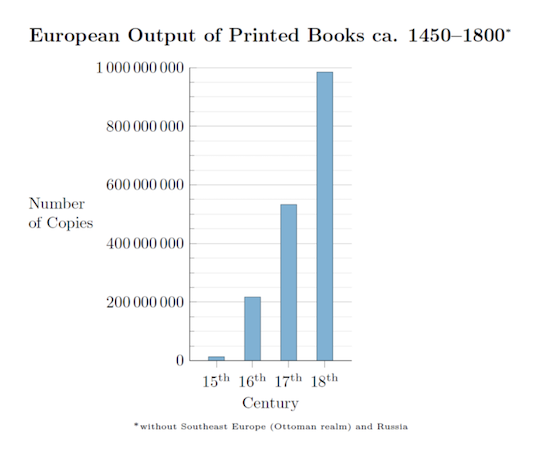| Before the printing press and the scientific revolution, the Church had an unshakeable monopoly on information. This made the Church extremely powerful. Let's explore why. Yesterday, you might recall, we outlined a simple premise: All human societies are built on three things. 1.] The costs and rewards of violence. 2.] The creation and maintenance of myths. 3.] The symbols of status that emerge out of #1 and #2. Those who create the myths wield the most power (violence) and create the status symbols. Everyone else pretty much falls into line with the myths, competing for the prevailing status symbols. With a monopoly on information, using the soft power of ideology, the Church had a stranglehold on all three. The status symbols they doled out included chivalry, special knowledge, and blessings. Knights, priests, and saints defined the moral ideal. The printing press was the first chink in this monopoly's armor. Then, the scientific revolution dealt the death blow. Suddenly, information was no longer as expensive and new knowledge (and myth-making) became exponentially more accessible and encouraged. Just like after the Civil War in America, old assumptions were destroyed and radical new ideas were greatly rewarded. 
From there, religious myths transformed to align with the new mercantilist culture. The status symbols changed. Reputation-based chivalry switched to financially-based wealth. The monopoly on violence shifted away from the Church and increasingly toward powerful monarchs, eventually moving us toward a world of nation states. The Church lost their power to control the narrative… to control the cultural myths and status symbols. The apocalyptic writers — warning of disasters like death, war, plague, and the end of the world — could no longer spellbind an audience, no matter how dramatic their stories. People simply stopped listening. Many of them realized… perhaps at first intuitively… that the Church's increasing doom-and-gloom was just a reflection of its world ending — not THE world. Though the power structures changed, the same rules applied: violence, myths, and status. After all, money itself is a myth — a "shared illusion" in which we all agree to participate. And what of violence? David Graeber, in his book Debt: The First 5,000 Years, reveals how violence became the base governing system for debt. If someone doesn't pay, you could legally exert violence upon them and throw them in prison. Those with the most money were therefore shielded from violence, given a rise in status. Today, money is still the ultimate status symbol. As mentioned, this new central myth paved the way for the rise of the nation-state. (I'll show how that happened tomorrow.) |
No comments:
Post a Comment